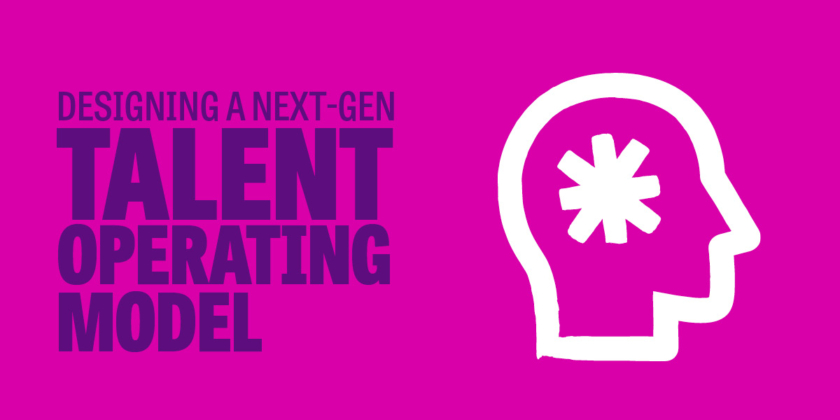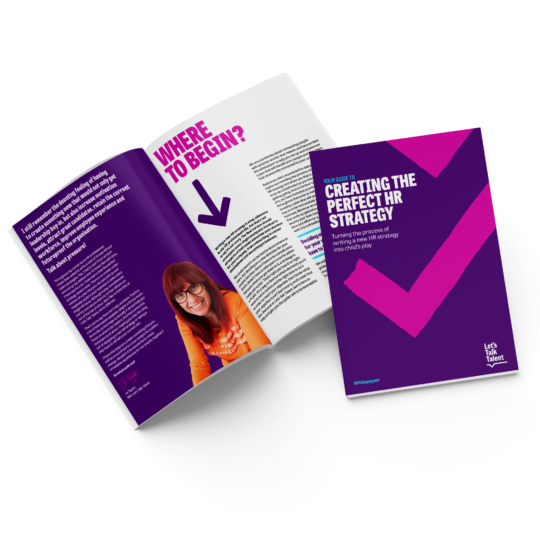How to set your business up for future success
Having an aggressive business strategy is one thing. Putting everything in place to make it happen is quite another, as one of our clients quickly discovered. This particular organisation had an ambitious growth target and wanted to ensure they had people in the right roles, and doing the right things, so they could reach their goals. The executive team knew that their initial startup model wouldn’t allow them to where they wanted to be. On the other hand, they also knew that doing nothing was not an option.
That’s where Let’s Talk Talent (LTT) came in. Our task was to review our client’s operating model and set the organisation up for future success. But as the C-suite found out, there are more things to consider than the people needed to deliver the work. We needed to extend our reach and identify every component within the business’s ecosystem which could impact its growth, including structure, processes, culture and capability. We would also have to plan the steps to get from now, to where they wanted to be.
Here’s how we did it.
What is a target operating model?
Every business has a vision, but to enable the application of this vision requires a target operating model. In short, this HR pillar looks at creating a high-level representation of how a company can best organise itself to more efficiently, and effectively deliver and execute the organisational strategy and objectives.
“Ultimately, a target operating model is all about organisational design. It involves creating the business you need using structure, processes, culture and capability as your main pillars,” says Jo, MD at LTT.
Using organisational design to map out the future operating model
Our client was a scientific research organisation with a clear, altruistic purpose: to detect, prevent and cure a whole array of diseases. While this was a strong recruitment lever, attracting staff looking to contribute to the cause, it also brought its own set of challenges.
To achieve its goal, the company needed to recruit over three million participants in a short timeframe, including research participants, partners and charities. This involved growing the talent pool from the current 120 employees to over 250 staff over the course of one year. Which was, of course, bound to generate pain points around skills and capabilities, efficiency and culture.
Our role as organisational design experts was to:
- Review and analyse the current operating model and map out how the organisation was set up
- Compare this to the future state the organisation should be moving towards
Designing the target operating model
The business had already identified seven key issues linked to its current operating model. Whilst this gave us a head start, it also meant we had a lot on our plate. We devised a two-pronged approach to tackle this project.
Phase 1: The operating model framework
- Plan overall structure changes relating to future talent requirements
- Propose overall leadership and governance structure
- Advise on decision-making and escalation framework
Phase 2: The operating model’s delivery
- Highlight and build leadership and management capability to drive accountability and delivery issues
- Build out job levelling frameworks and define the span of control
- Develop best practice and team structures
- Embed critical business areas across functions
- Establish flexible team structures and operations which suit ‘live
Delivering the target operating model
Now that we had a solid approach to reviewing our client’s target operating model, we got to work gathering insight on the ground. “Our main goal going into the audit stage was to join the dots between where the client was, and where they needed to be,” says Jo. We organised and led one-to-one interviews, conducted desk research and designed a polarity exercise aimed at establishing the ‘as is’ and the ‘to be’ organisational states (book a call with us to know more about the polarity exercise).
Armed with this information, we moved on to the more hands-on phase of the process. We identified areas for improvement and benchmarked external organisations. This ensured we had a 360-degree view of the medical industry. It was also important to highlight future talent requirements, which meant understanding the skills and roles that would be required to deliver the strategy, and categorising them into the key groups.
Future talent operating models: planning beyond the talent scope
After a month, we delivered our final recommendations, and ensured they covered every element of the business, and not just the talent portion of the equation, as initially thought. We split our findings into four main areas of focus, including:
- Structure
- Leadership team set-up and purpose
- Enabling high performance
- People and culture
While this highlighted the importance of scaling up every single component of the organisation’s model, it required a much wider reach than initially predicted for our client. To make things easier, we prioritised recommendations and produced a clear roadmap highlighting the steps they needed to take to reach their ‘North Star’ objective.
Conclusion
Redesigning your talent operating model to support the delivery of your long-term strategy can appear challenging. However, it could be the difference between hitting or missing your goals, and whether or not your business is around this time next year!
“Start small,” advises Jo. “Consider everything you’ll need to have in place to get there, from people to systems and processes, and use a modular approach to tackle one section at a time. Remember that businesses evolve and mature, so find what is right for you right now, and make sure you take your people on the journey with you.”
The hardest step in this seemingly straightforward process? “Holding a mirror up to the organisation can be daunting,” she adds. But painting a true picture of where the business is starting from is necessary, as it will inform the next action to take. We know this can be hard for internal teams to do. If you feel that’s the case, don’t hesitate to book a call with us. We’d be happy to come in to help you review your talent operating model.
Related Content:
- 9 trends HR Directors need to know in 2023 [Blog]
- The essential building blocks of talent management [Blog]
- The Vital Questions You Must Ask When Creating Your Talent Principles [Blog]
- Appetite for uncertainty with Alan Robertson – The Potential for What? [Podcast]
- Why potential is distinct from past performance with Alex Terry – The Potential for What? [Podcast]

